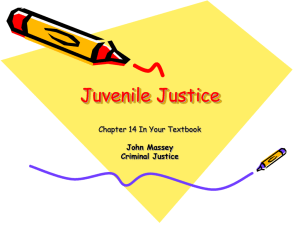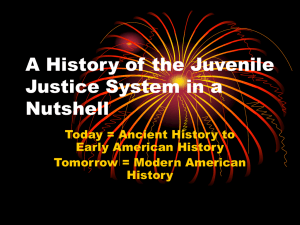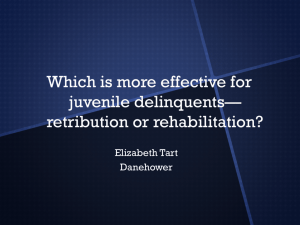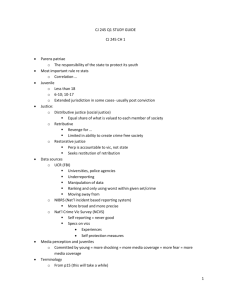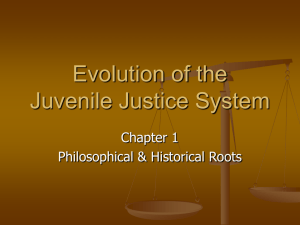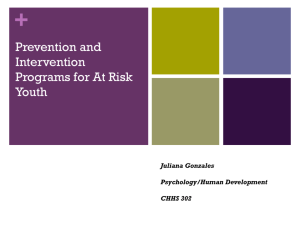Juvenile Justice: Then and Now
advertisement
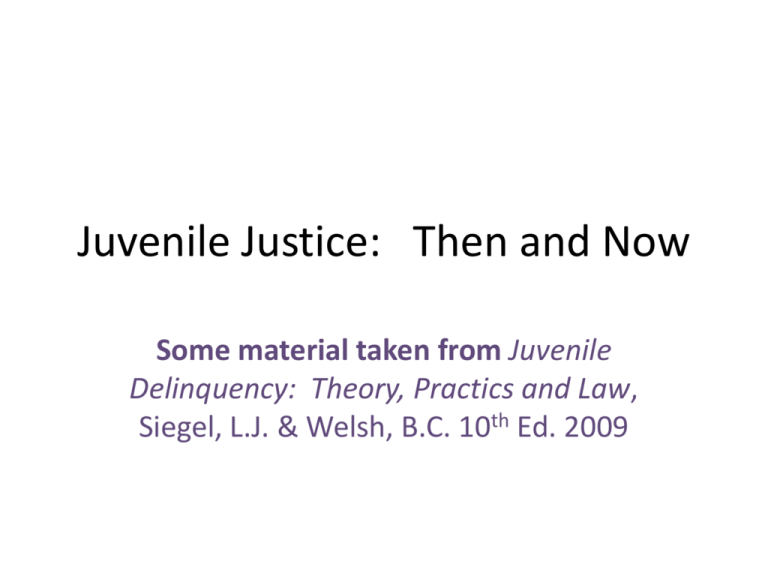
Juvenile Justice: Then and Now Some material taken from Juvenile Delinquency: Theory, Practics and Law, Siegel, L.J. & Welsh, B.C. 10th Ed. 2009 Early 1800’s Parens Patriae • Latin – The doctrine that grants inherent power and authority to the state to protect persons who are legally unable to act on their own behalf. • Has its roots in the Common Law of England. • The King (Queen) exercising his role as the father of the country could. Parents Patriae (continued) • In the US the “doctrine has its greatest application in the treatment of children, mentally ill persons, and others who are legally incompetent to manage their affairs.” • Ex parte Crouse (1839) Supreme Court of Pennsylvania • Law enforcement officers, think of the ex-parte orders you serve. 1800-1900 • Urbanization & industrialization • Large scale immigration • Local jurisdictions provided poorhouses (almshouses) and workhouses. • Settlement houses – Shelters or non-secure residences for vagrant children Child Saving Movement • Society for the Prevention of Pauperism (New York – 1816). Led to forming the House of Refuge – 1825 in New York City. In 1828, Boston House of Refuge was founded. • Activists in the movement were known as “child savers.” They believed runaway and delinquent children were a threat to the moral fabric of America. Child Savers To this day there is controversy. Some historians believe they were concerned citizens motivated by humanitarian ideals. Others believe they were upper-class citizens trying to protect their life-styles from the poor. Important evens mid-1800s • 1847 – State institutions for juvenile delinquents in Boston & New York Known as reform schools or reformatories, the coming decades would see the spread of such instititutions. • Children Aid Society, 1853. Children shipped to rural areas/farms. Known as orphan trains. Procedure lasted into the 20th century. Important Events late 19th Century • 1874 Society for the Prevention of Cruelty to Children (SPCC) formed. Agents granted power to remove children from abuse. Advised court on placement. Influenced legislatures. • The Illinois Juvenile Court Act of 1899. The first independent juvenile court. Recognized difference between delinquency and dependency. Important events first half of 20th Century • 1912- U.S. Children’s Bureau formed as first federal child welfare agency. By 1930s was monitoring state juvenile institutions for abuse. • 1900-1925 – Spread of juvenile courts to almost all states. • 1910 – Beginning of compulsory school acts.


